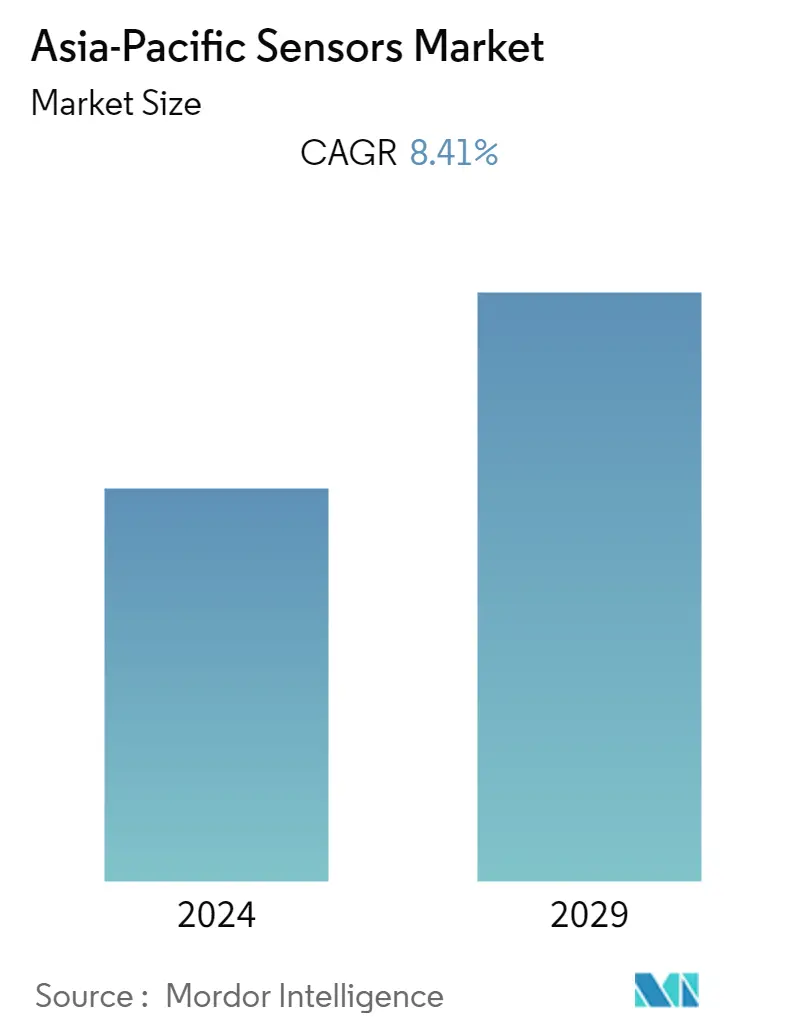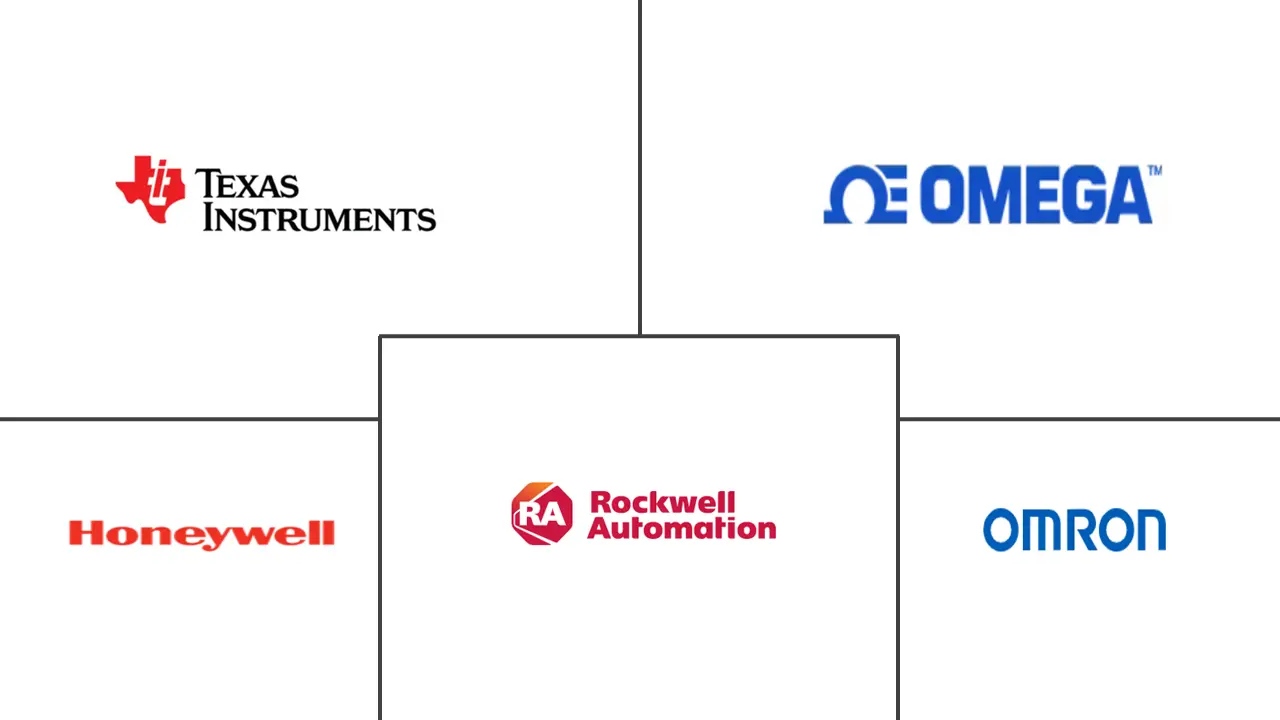Market Size of Asia-Pacific Sensors Industry

| Study Period | 2019 - 2029 |
| Base Year For Estimation | 2023 |
| Forecast Data Period | 2024 - 2029 |
| Historical Data Period | 2019 - 2022 |
| CAGR | 8.41 % |
| Market Concentration | Low |
Major Players
*Disclaimer: Major Players sorted in no particular order |
Need a report that reflects how COVID-19 has impacted this market and its growth?
Asia-Pacific Sensors Market Analysis
The Asia-Pacific sensors market was valued at USD 47.84 billion in the current year and is expected to reach USD 75.90 billion by the end of the forecast period, registering a CAGR of 8.41% during the forecast period. Sensors are part of a broader system that gathers information about the outside environment, puts it in a comprehensible form, and then conveys it.
- Most sensors are produced in the APAC region, and sensor technology is extensively utilized worldwide since so many cutting-edge technologies depend on the functionality of the sensors. Electric grids, smart homes, and smartphones are just a few of its applications. In contrast to mature regions like North America, the APAC region is still developing and expanding its use of sensors due to the trend of smart devices, a smart environment, industry 4.0, and the Internet of Things.
- Due to the presence of significant consumer electronics manufacturers in this region, analysts predict that Asia-Pacific will dominate the sensors market. The market is anticipated to be driven by increasing smartphone penetration, 5G penetration, and advancements across numerous end-user industries. China, South Korea, Japan, and India, among others, are major Asia-Pacific countries.
- Moreover, the promise of smart cities has captivated the APAC region's technology industry. As per the recent report by Equinix, "Smart Cities: Shifting Asia", UBS projects that APAC will account for 40% of the global addressable market growth for smart city projects, or USD 800 billion by 2025. This rapid urbanization is driving IT buildout and interconnection bandwidth growth to sustain APAC's expanding digital market. As a result, smart city applications like smart grids and buildings, air and water monitoring, smart transportation, smart waste collection, and disaster response are likely to expand the opportunity areas for the sensor market.
- Although the integration of sensors increases the level of industrial automation, it incurs an additional cost, which limits its use in cost-sensitive applications. In addition, the high development costs involved in the research and development activities to manufacture new products act as a critical challenge, mainly for the cash-deficient small and medium-sized sensor manufacturers.
- The COVID-19 epidemic severely impacted the worldwide supply chain and demand for many items, making it challenging to obtain some resources. Additionally, several businesses experienced a supply deficit of different items in February and March 2020 as a result of the production halt in nations like China. The price of raw materials increased as a result of the supply chain disruption, which had an effect on the total pricing of the sensors because there wasn't enough supply to fulfill demand.
